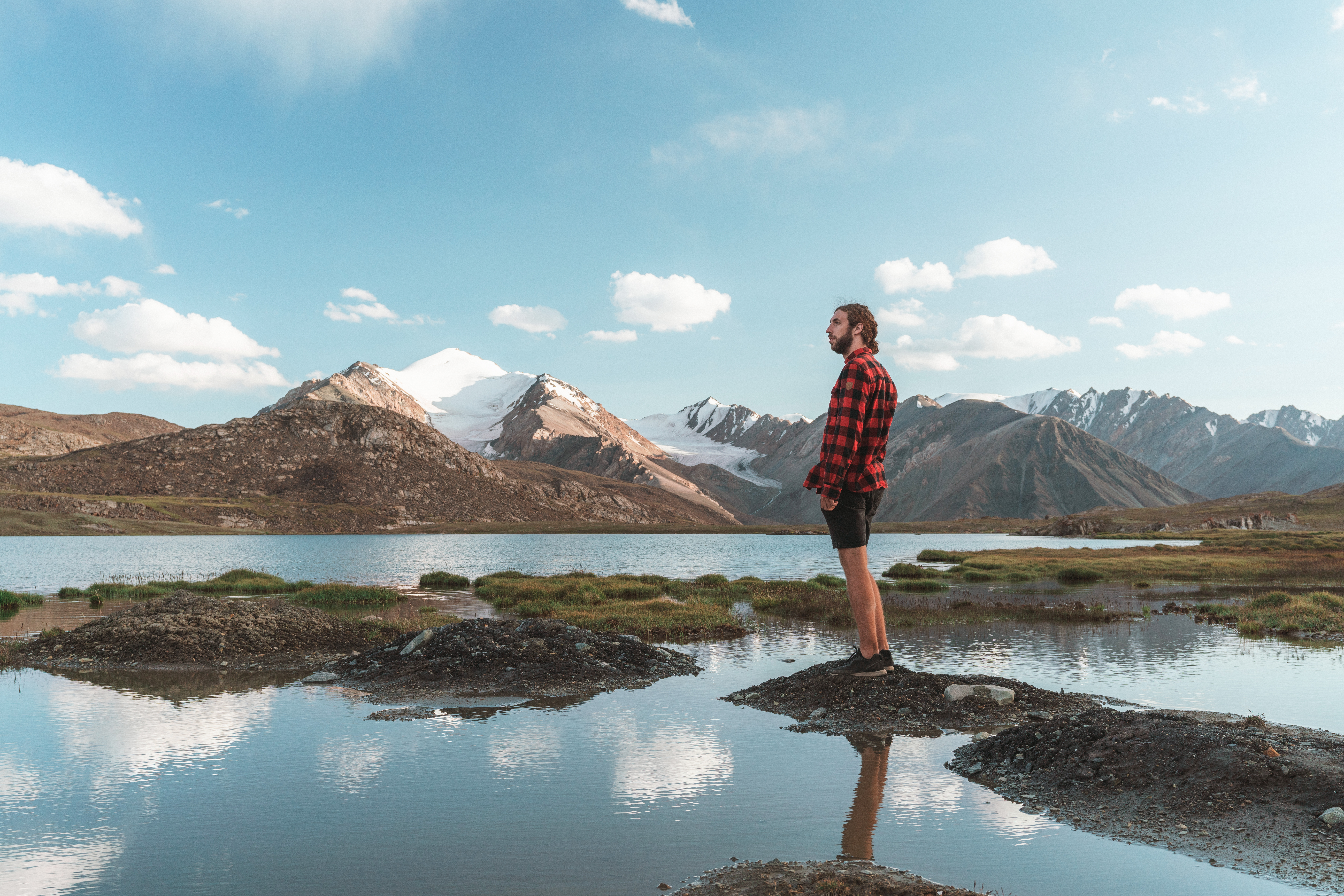
The country that once was an important section of the ancient Silk Road – which by the way, can become one of the most popular touristic routes in the near future – bares an impressive cultural heritage of nomadic traditions and history that can offer the visitors a wide range of adventures, recreation opportunities and a stunning gastronomic experience.
Kyrgyzstan has it all: the mighty rims of the Tian Shan and the Pamir mountains cross the countries landscape, fast rivers run through rocky gorges down to the valleys and alpine lakes spread on the highlands, providing a number of opportunities for active sports and recreational purposes.
Almost 90% of the territory of the county is covered by mountains, three of the highest ones reach over 7000 meters, while there are still more than 30 peaks above 6000 meters, and more than 40 summits are over 5000 meters. These abilities allowed to build an extensive network of tour routes that offer a tremendous variety of options for hiking and mountain climbing for all levels of difficulties. The terrain that is crossed by numerous rapid streams and rivers makes Kyrgyzstan a popular destination for whitewater rafting. The season typically runs from May to September, when the rivers are at their peak flow due to the melting snow and glaciers. The intensity of the stream and the difficulty levels of the rapids, however, require some basic skills. The most popular rafting destinations are the Chu River, with lower-class rapids, while the Naryn Falls Canyon on the Naryn River would attract the most vicious adrenaline junkies. Yet the waters of Kyrgyzstan can provide tranquillity.

Lake Issyk-Kul is the world's second-largest alpine lake and something that the people of Kyrgyzstan are extremely proud of. Just a few hours of driving from the capital city of Bishkek, this azure-blue body of water is framed by snow-capped peaks and offers a serene setting for relaxation and water-based activities. Visitors can indulge in swimming, sailing, fishing, and even hot spring bathing along the lake's picturesque shores. Moreover, the Issyk-Kul has a well-built bicycle road around it, so the recreation can be accompanied by some panoramic cycling.
Kyrgyzstan combines outdoor activities with cultural heritage as it lies at the crossroads of the historic Silk Road trade route, which connected East Asia with Europe. The Silk Road's influence can be seen in the cultural heritage, traditions, and craftsmanship of Kyrgyzstan. The nomadic lifestyle of the Kyrgyz people, their horsemanship skills, and their yurt dwellings all have ties to the Silk Road era. Many tour operators in Kyrgyzstan offer Silk Road-themed trips that allow visitors to explore historical sites such as Tash Rabat Caravanserai, one of the most well-preserved stone "caravan palaces" that served as a resting point of the merchants along their journey.

And possibly the best thing about the touristic options in Kyrgyzstan is probably the fact that you can combine it all, there are plenty of tours that lead to the mountain passes, that include the cultural sites and are being done on horseback, on foot, off-road cars (or motorcycles by choice) and even river rafts to provide the most complex experience. Of course, there is plenty of room for improvement if we talk about the infrastructure that requires significant investments, one of these areas is the ski resorts. Despite that, the mountains provide great skiing locations with stunning views those who are used to the advanced infrastructure of the ski resorts of the Alps, they may look a bit basic. But this opens the doors for foreign investments, and there are already ongoing Swiss projects to improve the situation.
Whether a coincidence or not, the locals often refer to Kyrgyzstan as the Switzerland of Central Asia, or at least this is the level that they would like to reach, which is quite a noble title to bear.
The author is a researcher at the Eurasia Center